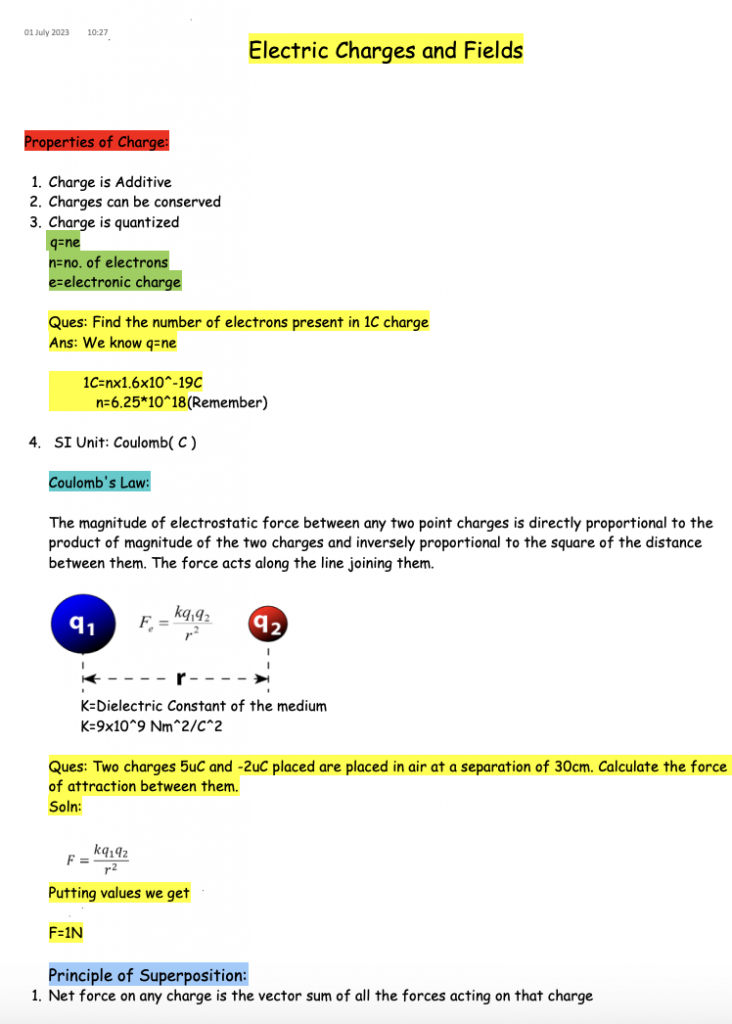Electric Charges and Fields (Grade A)
Summary:
Electric Charges and Fields involve several important concepts. A charge is additive, conserved, and quantized, with the charge of a system represented by q = ne, where n is the number of electrons and e is the electronic charge. The SI unit for the charge is the Coulomb (C). Coulomb’s Law states that the electrostatic force between two point charges is directly proportional to the product of their magnitudes and inversely proportional to the square of the distance between them. This force acts along the line joining the charges, with the constant of proportionality denoted as K = 9×10^9 Nm^2/C^2.
The Principle of Superposition states that the net force on a charge is the vector sum of all the forces acting on it. Additionally, the individual forces between two charges are unaffected by the presence of other charges. Electric field intensity, denoted by E, represents the force experienced by a unit charge placed at a point. It follows the law of superposition and is given by E = F/q or E = KQ/r^2, where Q is the source charge, and r is the distance from the charge.
Electric field lines provide valuable information about the electric field. They originate from positive charges and terminate on negative charges, never intersect each other, and do not form closed loops. They are continuous in nature. An electric dipole consists of two equal and opposite charges at a finite distance. The dipole moment (p) is proportional to the product of the charge magnitude and the separation distance between the charges. The SI unit for dipole moment is Nm.
Excerpt:
Electric Charges and Fields
Properties of Charge:
1. Charge is Additive
2. Charges can be conserved
3. Charge is quantized
q=ne
n=no. of electrons
e=electronic charge
Ques: Find the number of electrons present in 1C charge
Ans: We know q=ne
1C=nx1.6×10^-19C
n=6.25*10^18 (Remember)
4. SI Unit: Coulomb( C )
Coulomb’s Law:
The magnitude of the electrostatic force between any two point charges is directly proportional to the
product of the magnitude of the two charges and inversely proportional to the square of the distance
between them. The force acts along the line joining them.


Reviews